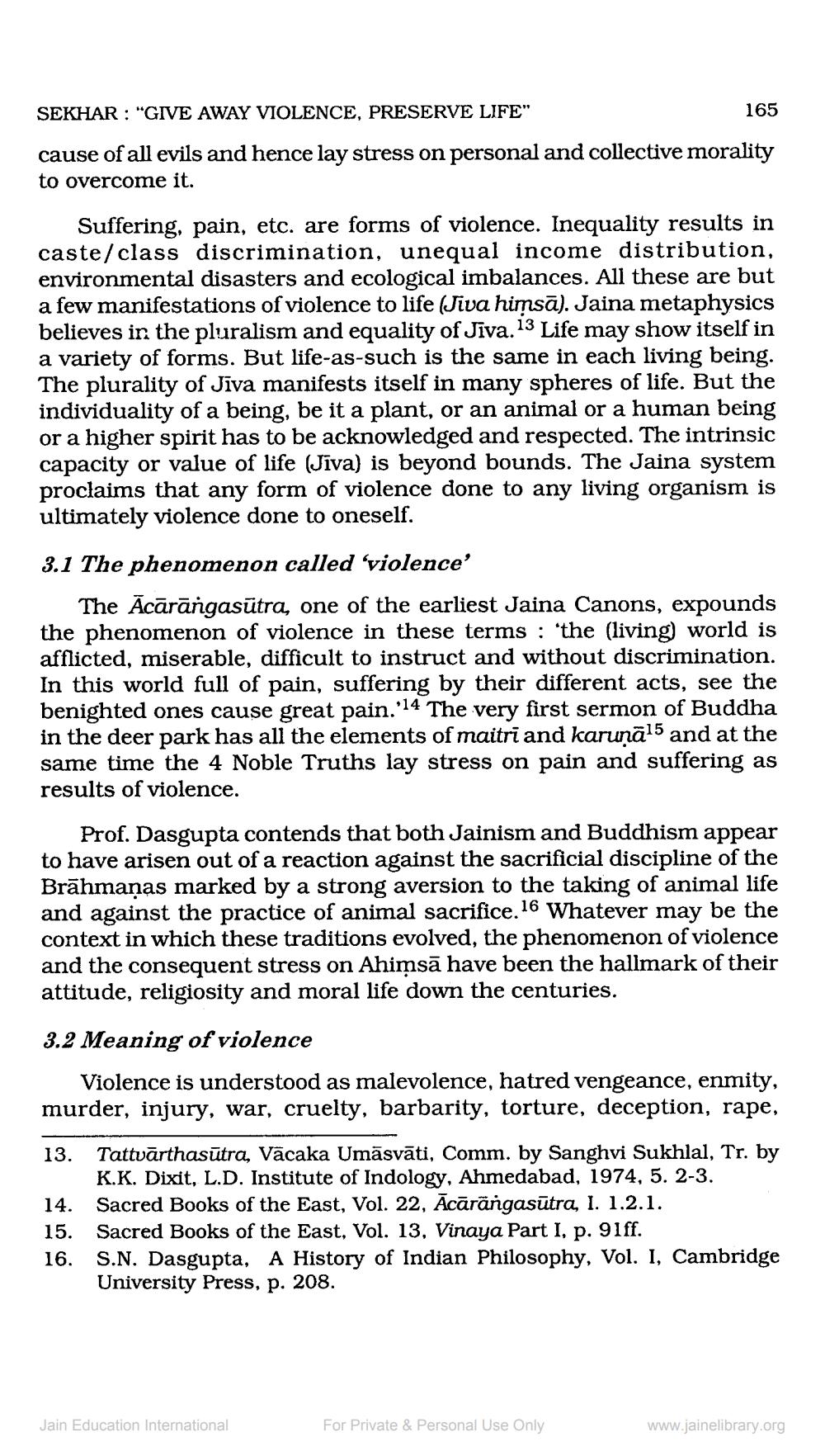Book Title: Jain Journal 2000 04 Author(s): Jain Bhawan Publication Publisher: Jain Bhawan Publication View full book textPage 9
________________ SEKHAR: "GIVE AWAY VIOLENCE, PRESERVE LIFE" cause of all evils and hence lay stress on personal and collective morality to overcome it. Suffering, pain, etc. are forms of violence. Inequality results in caste/class discrimination, unequal income distribution, environmental disasters and ecological imbalances. All these are but a few manifestations of violence to life (Jiva himsā). Jaina metaphysics believes in the pluralism and equality of Jiva. 13 Life may show itself in a variety of forms. But life-as-such is the same in each living being. The plurality of Jiva manifests itself in many spheres of life. But the individuality of a being, be it a plant, or an animal or a human being or a higher spirit has to be acknowledged and respected. The intrinsic capacity or value of life (Jiva) is beyond bounds. The Jaina system proclaims that any form of violence done to any living organism is ultimately violence done to oneself. 165 3.1 The phenomenon called 'violence' The Acārāngasūtra, one of the earliest Jaina Canons, expounds the phenomenon of violence in these terms: the (living) world is afflicted, miserable, difficult to instruct and without discrimination. In this world full of pain, suffering by their different acts, see the benighted ones cause great pain.'14 The very first sermon of Buddha in the deer park has all the elements of maitri and karunā15 and at the same time the 4 Noble Truths lay stress on pain and suffering as results of violence. Prof. Dasgupta contends that both Jainism and Buddhism appear to have arisen out of a reaction against the sacrificial discipline of the Brāhmaṇas marked by a strong aversion to the taking of animal life and against the practice of animal sacrifice. 16 Whatever may be the context in which these traditions evolved, the phenomenon of violence and the consequent stress on Ahimsa have been the hallmark of their attitude, religiosity and moral life down the centuries. 3.2 Meaning of violence Violence is understood as malevolence, hatred vengeance, enmity, murder, injury, war, cruelty, barbarity, torture, deception, rape, 13. Tattvārthasūtra, Vacaka Umāsvāti, Comm. by Sanghvi Sukhlal, Tr. by K.K. Dixit, L.D. Institute of Indology, Ahmedabad, 1974, 5. 2-3. Sacred Books of the East, Vol. 22, Acarängasūtra, I. 1.2.1. 15. Sacred Books of the East, Vol. 13, Vinaya Part I, p. 91ff. 14. 16. S.N. Dasgupta, A History of Indian Philosophy, Vol. I, Cambridge University Press, p. 208. Jain Education International For Private & Personal Use Only www.jainelibrary.orgPage Navigation
1 ... 7 8 9 10 11 12 13 14 15 16 17 18 19 20 21 22 23 24 25 26 27 28 29 30 31 32 33 34 35 36 37 38 39 40 41 42 43 44 45 46 47
